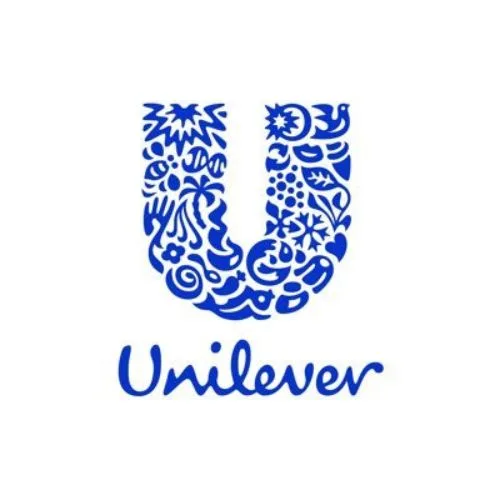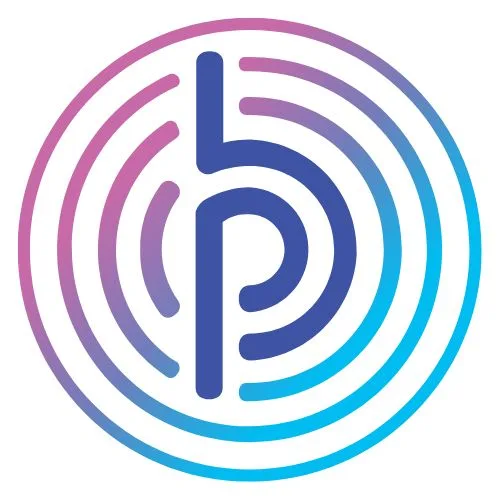- DISC Based Workshops
DISC for Customer Service
DISC for Customer Service Excellence is the gold standard in Customer Service Training globally, offered by Synergogy.

People Trained
DISC Reports - Customer Service Version
Industry Sectors Covered
Companies using the highly acclaimed TTI Success Insights DISC Reports
Course Content
DISC for Customer Service Excellence is a comprehensive program designed to enhance customer service skills through the application of DISC assessment. This structured workshop equips participants with the tools to understand diverse customer personalities, improve communication strategies, and deliver exceptional service. Participants will learn to leverage DISC profiling to identify customer needs, adapt their communication style, and manage challenging interactions effectively.
Introduction to DISC
Brief introduction of DISC, its construct and history.
DNA of DISC
Dominance, Influence, Steadiness & Compliance.
Self-Discovery
Discovering personal Strengths and weaknesses by reading your own DISC profile.
Service Mindset
Differentiating between fixed service mindset and growth service mindset.
Customer Needs
Identifying your customer's implicit and explicit needs.
Communication Skills
learning key skills to creating effective customer interactions.
Cultural Nuances
Cross cultural differences and how to impact customer service.
Adapting to Succeed
Identifying and adapting to customers' DISC styles for successful outcomes.
Who Should Attend DISC for Customer Service?

- Airline Staff
- Retail Staff
- Hospitality Professionals
- Public Relations Team
- Call Center Agents
- HR & Support Teams
DISC for Customer Service Excellence is ideal for customer-facing employees, including customer service representatives, sales associates, and support staff, as well as managers and team leaders who oversee customer interactions.
It’s also beneficial for anyone in the organization looking to enhance their customer service skills and understanding of customer-centric approaches.
Participant Takeaway
DISC Report
Personalised 24-Page DISC Assessment for each participant.
Coursebook
Course books that covers all DISC and Customer Service content.
Ready Reckoner
Readymade Handouts & Laminates for work stations.
Elevate Your Team's Customer Service Skills
This comprehensive workshop equips participants with the tools to understand diverse customer personalities, improve communication strategies, and deliver exceptional service. Participants will learn to leverage DISC profiling to identify customer needs, adapt their communication style, and manage challenging interactions effectively.
- Free 1 Hour Consultation
- In-Person or Virtual
- Fully Customised
Choose from a Range of customizations
Choose from a range of solutions to suit your every need. Our course can be customised to your industry or business unit context. What’s more, we are happy to deliver this course face to face or in virtual, instructor-led formats.
Other Courses on Customer Service
Delivering Customer World Class Experience (CX)
This fully bespoke course covers the broader concept of customer experience, covering aspects such as journey mapping, customer satisfaction, and creating positive customer interactions.
High Impact Customer Service Recovery Training
This course teaches employees how to handle service failures, customer complaints, and recovery strategies to maintain customer satisfaction.
Cross-Cultural Customer Service Training
Training that addresses cultural competence, diversity, and inclusion in customer service interactions, especially relevant for global businesses.
Customer Service Analytics and Metrics Courses
Training programs that explore the use of data analytics and key performance indicators (KPIs) for measuring and improving customer service effectiveness.
Let’s talk about your big project
Write to us and let us know how we can help you with your talent needs at programs@synergogy.com
Frequently asked questions
Everything you need to know about Customer Service Excellence
Customer service is the comprehensive support and assistance provided by businesses to their customers before, during, and after a purchase. This vital service encompasses a wide range of activities tailored to ensure a smooth, satisfying experience for the customer. Key aspects include answering inquiries, resolving complaints, providing product usage guidance, and following up on service issues. Effective customer service extends across various communication channels, such as phone, email, live chat, social media, and in-person interactions. It is not just about resolving issues but also about fostering a positive relationship with customers, enhancing their overall satisfaction and loyalty. Building good customer service mindsets and approach helps in creating a reliable and trustworthy brand image, ultimately contributing to business growth and customer retention.
Customer service is not just a support function; it’s a vital component of business success, shaping customer experiences, driving loyalty, and influencing overall growth and stability.
-
Enhances Customer Lifetime Value: Quality customer service increases the duration and profitability of your relationship with your customer causing true customer success.
-
Reduces Costs: It decreases customer churn. Retaining existing customers is more economical than acquiring new ones, thereby reducing overall costs.
-
Boosts Customer Satisfaction: Excellent service leads to customer satisfaction, resulting in repeat business and positive recommendations.
-
Fosters Customer Loyalty: It builds trust and loyalty, making customers more likely to choose your brand over others.
-
Improves Business Reputation: Your company’s reputation is significantly influenced by the quality of customer service. Positive interactions enhance public image, while negative experiences can damage it.
-
Differentiates Your Brand: Exceptional service sets your company apart in a competitive market.
-
Increases Customer Retention: Retaining existing customers is more cost-effective than acquiring new ones, and good service is key to retention.
-
Drives Word-of-Mouth and Referrals: Satisfied customers often recommend your business, promoting organic growth.
-
Reduces Complaints and Churn: Effective service promptly resolves issues, reducing complaints and customer loss.
-
Boosts Revenue: Happy customers are more likely to make additional purchases.
-
Gathers Valuable Feedback: Interactions provide insights for improvement and innovation.
-
Offers Competitive Advantage: Excellent service gives your business an edge in the market.
-
Cultivates a Customer-Centric Culture: A focus on service fosters a culture that prioritizes customer needs.
-
Adapts to Changing Customer Expectations: Service helps your business stay aligned with customer needs and expectations.
-
Mitigates Negative Publicity: Good service can counteract negative incidents, preserving your company’s image.
-
Encourages Repeat Business and Cross-Selling: Satisfied customers are likely to return and explore other offerings.
-
Upsells Products: Service interactions present opportunities to introduce and upsell products.
-
Boosts Employee Retention: A strong focus on customer service increases employee advocacy and retention.
Understanding the distinction between customer service and customer experience (CX) is key to providing outstanding overall support to your customers. Here’s how they differ:
Scope and Coverage:
- Customer Service: This is your company’s direct response to a customer’s specific need or issue, often involving a support representative. It’s a single aspect of the customer’s interaction with your business, focusing on problem-solving, effective communication, and issue resolution.
- Customer Experience: CX encompasses the entire journey a customer has with your business, from the first discovery to post-purchase interactions and beyond. It includes all the touchpoints a customer has with your business, not just service interactions, and involves creating positive emotional connections.
Components:
- Customer Service: Often reactive, it’s about assisting customers in specific instances, like answering queries or resolving issues.
- Customer Experience: This is more proactive, involving strategic thinking and insight to enhance the overall journey. It’s shaped by the three Ps – People, Process, and Product.
Focus:
- Customer Service: Has a more immediate, transactional focus aimed at resolving specific customer concerns.
- Customer Experience: Builds long-term relationships and perceptions about the brand, influencing customer feelings over time.
Measurement:
- Customer Service: Measured with metrics like Net Promoter Score (NPS) or Agent Impact Score (AIS), focusing on the quality of individual service interactions.
- Customer Experience: Measured using tools like Customer Effort Score (CES) and Tethr Effort Index (TEI), assessing the entire customer journey.
Control:
- Customer Service: Your company has complete control over the service provided.
- Customer Experience: While you can shape CX, control is more limited due to numerous factors impacting customer perception.
Holistic Approach vs. Specific Interaction:
- Customer Experience: It’s a holistic approach encompassing the entire journey, involving multiple departments and numerous touchpoints.
- Customer Service: Represents a specific interaction within this journey.
Training and Skill Sets:
- Customer Service: Requires skills related to immediate problem-solving and communication.
- Customer Experience: Involves a broader skill set, including understanding customer journeys and strategic thinking.
Enhancing customer service is a multi-faceted approach that involves both your team and the processes they use. Here are key strategies to consider:
Develop Strong Customer Service Skills:
- Foster empathy, adaptability, and a strong work ethic in your team.
- Encourage clear communication and solution-focused approaches.
Comprehensive Customer Service Training:
- Provide training on effective communication, problem-solving, and active listening.
- Include techniques for accepting mistakes gracefully and delivering speedy responses.
Implement a Customer Feedback System:
- Establish channels like surveys or NPS for customers to provide feedback.
- Use this feedback to identify improvement areas and address concerns.
Set Realistic Expectations:
- Be transparent with customers about product/service delivery using the SMART framework.
- Manage expectations effectively to avoid misunderstandings.
Personalize Customer Interactions:
- Use customer names and refer to past interactions to make customers feel recognized and valued.
Empower Frontline Staff:
- Enable frontline employees to make on-the-spot decisions to resolve issues promptly.
Leverage Technology Solutions:
- Implement chatbots, CRM systems, and customer service software to streamline processes.
Monitor Customer Service Metrics:
- Track KPIs such as response times, resolution rates, and customer satisfaction.
Create a Customer-Centric Culture:
- Cultivate a mindset across the organization that prioritizes customer needs in decision-making.
Consistency Across Channels:
- Ensure uniform customer experience across all channels, including in-person, phone, email, and online.
Establish Problem Resolution Protocols:
- Create clear guidelines for handling complaints and resolving issues.
Reward and Recognize Excellence:
- Acknowledge and reward employees who consistently deliver exceptional service.
Embrace Continuous Improvement:
- Regularly revise and improve service processes based on feedback and industry trends.
Educate Customers:
- Offer resources to help customers understand and effectively use your products/services.
Hire and Retain Customer-Focused Staff:
- Focus on recruiting individuals with a strong service orientation and retain them through meaningful initiatives.
Engage with the Community:
- Actively participate in community events and solicit customer input to strengthen relationships.
Customer service training is the process of equipping employees with essential skills, knowledge, and attitudes for effective customer interactions. It aims to enhance customer experience, build loyalty, and uplift the organization’s reputation. The training includes improving interpersonal communication, product knowledge, conflict resolution, and crisis management. It’s an ongoing process, beneficial for all employees to deliver effortless support across all channels.
- Increasing employee engagement and understanding of customer needs.
- Enhancing customer service skills and company culture.
- Ensuring in-depth knowledge about company values and products.
- Developing conflict resolution skills and adaptability.
- Training in customer service fosters a customer-focused mindset, essential for providing outstanding customer experiences.
- Identifying learning objectives aligned with brand values.
- Mapping end-to-end progress and interviewing current service teams.
- Utilizing data from customer feedback and service bots.
- Continuously monitoring and adapting the program based on customer reviews and feedback.
- Active/Reflective Listening and Effective Communication.
- Product Knowledge and Demonstration.
- Problem Solving and Decision Making.
- Empathy and Customer Experience Simulation.
- Understanding Corporate Culture and Service Standards, and Crisis Management.
- Navigating Social Media and Embracing Diversity.
- Building brand reputation and fostering positive word-of-mouth.
- Enhancing customer loyalty, satisfaction, and retention.
- Improving conflict resolution skills and employee engagement.
- Creating a customer-centric corporate culture.
- Contributing to increased profits and efficient use of technology
Customer service can be measures through KPIs or OKRs depending on what levels these measurements exist. These measurements can be using lagging indicators or leading indicators.
Balancing both leading and lagging indicators provides a comprehensive view of customer service performance, enabling businesses to identify areas of strength and opportunities for improvement.
Lagging Indicators
Lagging indicators reflect past performance and outcomes.
- Net Promoter Score (NPS): Likelihood of customers recommending your service.
- Customer Retention Rate: Rate at which customers continue doing business with you.
- Customer Churn Rate: Percentage of customers who stop using your services.
- Revenue from Repeat Customers: Income from existing customers.
- Annual Customer Value: Average revenue per customer annually.
- Customer Lifetime Value (CLV): Total revenue expected from a customer over their lifetime.
- Customer Complaints and Issues: Number and types of complaints received.
- Resolution Time: Time taken to completely resolve issues.
- Customer Feedback and Reviews: Overall customer reviews about the service.
- Escalation Rate: Rate at which issues need higher management involvement.
Leading Indicators
Leading indicators reflect current and near future performance and outcomes.
- Customer Satisfaction Scores (CSAT): Immediate customer satisfaction post-interaction.
- First Contact Resolution Rate (FCR): Percentage of customer issues resolved in the first interaction.
- Service Level (SLA Compliance): Adherence to service level agreements, like response time.
- Employee Satisfaction and Engagement: Indicates future customer service quality.
- Training Completion Rates: Percentage of staff completing relevant training.
- Average Handling Time: Average time taken to handle a customer interaction.
- Customer Effort Score (CES): How easy it is for customers to get issues resolved.
- Volume of Service Requests: Trends in the number of customer service requests received.
- Social Media Sentiment Analysis: Early insights into customer perceptions.
- Communication and offers direct insights into customer behavior.
- Interactive learning through simulations, e-learning platforms, and gamified content.
- Familiarity with customer service software and automation tools.
- Real-time feedback and data analytics for continuous improvement.
- Incorporate interactive and gamified elements.
- Use storytelling, video content, and microlearning techniques.
- Encourage collaborative learning and personalized learning paths.
- Provide incentives, encourage questions, and foster a continuous learning environment.
- Setting the vision and expectations for customer service.
- Establishing a customer-centric culture and providing necessary resources.
- Ensuring training aligns with organizational goals and promoting continuous learning.
- Communicating the importance of customer service and fostering a learning culture.
Yes, it’s essential for:
- Skill development and adaptability to changing customer needs.
- Staying updated with technological advancements and industry trends.
- Incorporating customer feedback and enhancing soft skills.
- Promoting leadership development and preventing complacency.
- Identify underlying reasons and communicate the purpose and benefits.
- Offer customizable and flexible training options.
- Use technology to facilitate collaboration and track progress.
- Provide recognition and incentives, and seek continuous feedback.
- CSAT (Customer Satisfaction Score): Measures short-term happiness after a specific interaction with your brand.
- NPS (Net Promoter Score): Gauges overall brand satisfaction and customer loyalty. It’s about the long-term relationship and likelihood of customers advocating for the brand.
- CSAT is transactional and versatile, while NPS offers a broader view of customer loyalty.
Still have questions?
Can’t find the answer you’re looking for? Please feel free to write to us.
Our Blog
Boosting Team Efficiency with DISC Profiles
Learn how to boost team efficiency with DISC Profiles. The DISC Team Profile offers you all you need to enhance your team's productivity.
Harnessing DISC Assessments for Enhanced Team Collaboration
Learn how to harness DISC assessments to enhance team collaboration with Synergogy's world class DISC based team building workshops.
What is BEI?
Our comprehensive guide unravels the nuances of BEI, from its foundational concepts to its practical application providing invaluable insights for HR professionals.
The Manager’s Guide to Mastering BEI Techniques
Discover the essentials of Behavioral Event Interviewing (BEI) in this in-depth guide, tailored for managers and HR professionals. Learn about crafting questions, integrating technology, and best practices to enhance talent acquisition and make informed hiring decisions.
Competency-Based Interviewing: An In-Depth Exploration into BEI
Dive into Behavioral Event Interviewing (BEI) and transform your hiring strategy. This guide introduces the essentials of crafting effective BEI questions and evaluating candidate responses, seamlessly integrating these methods into your talent acquisition process.
7 Proven Strategies for Managing Difficult Customers with DISC: Transforming Tensions into Triumph
Gaining insight into both personal and customer behaviours and preferences can be invaluable for customer service professional striving to provide exceptional service to challenging customers.
Building a Successful Succession Plan: A Step-by-Step Guide
Succession planning is a strategic process aimed at identifying and developing potential leaders within an organization who can replace key leaders when they leave, retire, or are unable to perform their duties. It involves nurturing high-potential employees for advancement, ensuring business continuity, and promoting a culture of talent development.
A Comprehensive Guide to Competency Mapping
Competency mapping is a strategic HR process used to identify and analyze the knowledge, skills, and behaviors needed to perform tasks efficiently and effectively within an organization. It aids in understanding the capabilities of current employees, thus facilitating informed decisions on recruitment, training, and performance evaluation.
The Comprehensive Guide to Creating Mission, Vision, and Values Statements
Crafting mission, vision, and values statements is an integral aspect of an organization's strategic planning process. These declarations provide a roadmap guiding the organization's decisions and actions, while also instilling a sense of purpose among its stakeholders
The Ultimate Guide to Organizational Development
Organizational development is a meticulously planned strategy. It cultivates growth and change within organizations, fostering the enhancement of organizational effectiveness and employee […]
Stepping Up: A Comprehensive Guide for First-Time Managers
The transition from a specialist or an individual contributor to the role of a manager is often filled with a mixture of excitement and apprehension. For many, it is the first step into the realm of leadership, offering a broader perspective of the organization and presenting an entirely new set of responsibilities. This voyage from being an individual player to becoming a first-time manager is as thrilling as it is profound.
Navigating Conflict: A Comprehensive Guide to Conflict Management
"Conflict is the gadfly of thought," so proclaimed the esteemed philosopher, Socrates. It stings and nudges us out of our complacency and comfort zones. In today's dynamic organizations, his wisdom resonates more than eve
Implementing a Mentorship Program: Ultimate Guide
A mentorship program can have a profound impact on organizations, promoting professional growth, fostering stronger relationships, and boosting employee satisfaction. This comprehensive guide offers a practical roadmap for organizations to establish and implement a successful mentorship program.
Job Evaluation Using Point Factor
Navigate through the realm of job evaluation by delving into the effective Point Factor Method. Discover how this method revolutionizes workplace productivity and enhances human resource management.
India’s Premier Design Thinking Certification Program – CDTP™
In a world consistently propelled by digital innovation, the realm of Design Thinking is becoming increasingly prominent. The torchbearer in this transformative journey, particularly in India, is the Synergogy Design Thinking Certification program. More than just an educational platform, Synergogy offers an unrivalled roadmap to a prosperous and burgeoning professional future.
Mastering Certified Competency-Based Interviewing Skills
In today's competitive job market, having strong interviewing skills is crucial for both job seekers and employers. To effectively assess candidates and make informed hiring decisions, organizations are increasingly adopting competency-based interviewing techniques. In this comprehensive guide, we will delve into the realm of certified competency-based interviewing skills, providing valuable insights, strategies, and tips to help you master this approach and excel in your hiring process.
Introduction to Interviewing Skills Training Certification
In the ever-evolving landscape of the modern workplace, companies need to adapt swiftly to keep up with the changing times. The traditional method of evaluating candidates based solely on their resumes and qualifications is no longer sufficient. It is the interviewing skills that hold the key to unlocking a candidate's true potential.
Mastering the Art of Interviewing Skills: A Comprehensive Guide
Whether you're looking to be the next Sherlock of recruitment or the Usain Bolt of job candidates, you've come to the right place. Strap yourself in and get ready for a whirlwind ride through the world of interviews, a dimension where everything you say or don't say can change your destiny.
Mastering CEO Succession Planning
In the fast-paced corporate world, CEO succession planning is not just a strategy, it's a necessity. The role of a CEO is pivotal in steering the organization towards success. However, the inevitability of change means that companies must be prepared for the day when their current leader steps down. This is where CEO succession planning comes into play. It ensures that there is a seamless transition of leadership, safeguarding the company’s vision, and maintaining its growth trajectory.
5 Simple Steps to Effective Problem Solving
The ability to solve problems is a crucial skill in the modern workplace. It can make the difference between success and failure, […]
Paving Your Path as a First-Time Manager: A Definitive Guide
Stepping into the world of management for the first time can often feel like venturing into a jungle without a compass. It’s a daunting landscape filled with challenges, expectations, and a new lexicon of ‘manager-speak’. But fear not! Here’s our comprehensive guide, sprinkled with a little wisdom from seasoned managers and some hard-learned lessons, to help you navigate your journey with confidence.
6 Leaders Share Their Insights on Diversity, Equity, and Inclusion
In this article, we interview six leaders from various industries to hear their thoughts on how to create a more inclusive workplace […]
How to develop an agile culture for startups?
The new role of Learning & Development in the post-pandemic era. COVID-19 has forced companies to re-image how L&D should function.
5 Mistakes to avoid while hiring internationally
The new role of Learning & Development in the post-pandemic era. COVID-19 has forced companies to re-image how L&D should function.
Creating a blueprint for organizational mental health
The new role of Learning & Development in the post-pandemic era. COVID-19 has forced companies to re-image how L&D should function.
BEI Certification Program
The Certified BEI Practitioner (C-BeiP)™ accreditation is a 8-hour BEI Certification Program. This interviewing skills certification program is endorsed by Human Resource Certification Institute (HRCI) for 8 Hours of continuing education units.
A Retro Look at Learning & Development: Preparing for the Future
The new role of Learning & Development in the post-pandemic era. COVID-19 has forced companies to re-image how L&D should function.
Self Regulation
Building your emotional intelligence by improving self regulation is one of the most difficult part of improving your Emotional Quotient.
Online DISC Certification – New Zealand
Master DISC application! Learn from the company that first computerised DISC in 1984.
Online DISC Certification – Melbourne
Master DISC application! Learn from the company that first computerised DISC in 1984.
Online DISC Certification – Brisbane
Master DISC application! Learn from the company that first computerised DISC in 1984.
Online DISC Certification – Sydney
Master DISC application! Learn from the company that first computerised DISC in 1984.




















